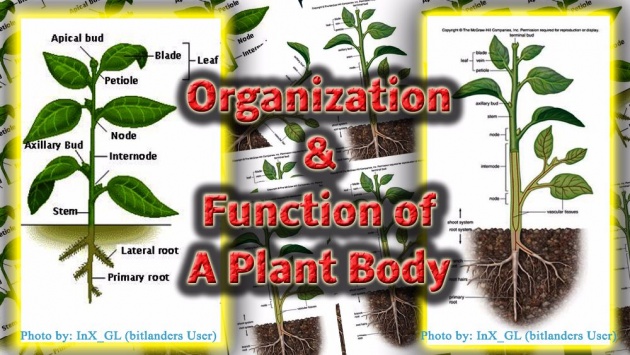Photo Credit: InX_GL Via bitlanders
Function & Organisation of a Plant Body
Hello Fellows,
The blog is about the Organisation and Functions of A Plant Body. I have already written something about plants, to read my previous blog please click here.
Pollination:
As you know that a flower possesses male and female productive organs. The male sex cells are contained in the pollen grains found in “Anther” and the female sex cells are contained in the “Ovules” found in the ovary. Pollen grains are transferred from the anther to the stigma by a process called “Pollination”.
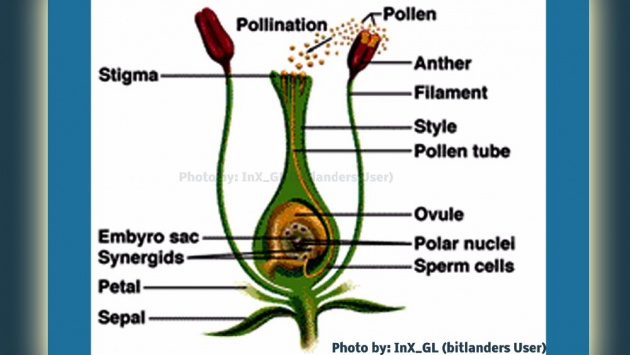
Photo Credit: InX_GL Via bitlanders
If the pollen of the flower falls onto the stigma of the same flower, then the pollination is called “self-pollination”.
If the pollen of the flower falls onto the stigma of some other flower but of the same kind it is called “Cross Pollination”.
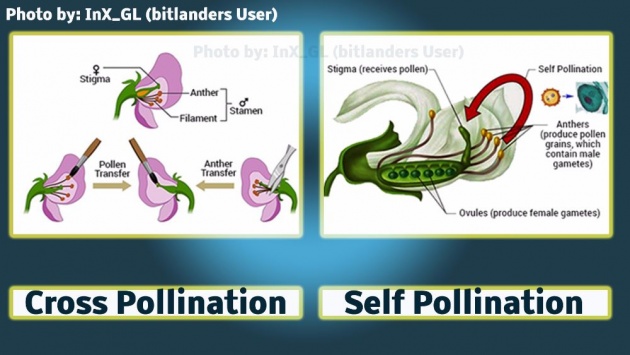
Photo Credit: InX_GL Via bitlanders
Plants can either be pollinated by the wind or by insects.
Fertilisation in Plants:
It is a process by which the male reproductive cells fuse with the female reproductive cells. Fertilisation process can occur, if pollen grains and ovules are mature, i.e. their reproductive cells must be well informed. This type of process is known as “Sexual Reproduction”.
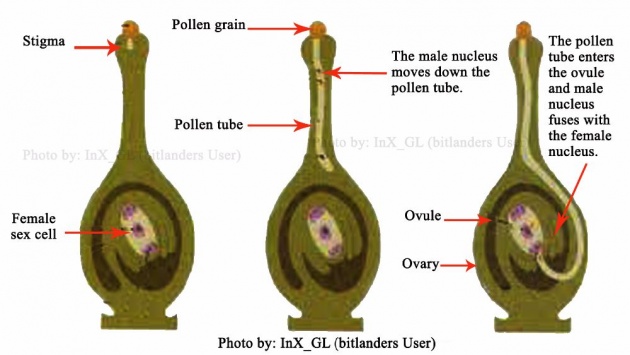
Photo Credit: InX_GL Via bitlanders
When a mature pollen grain falls on a mature stigma, the stigma produces a sugary substance in which the pollen grain germinates to produce a pollen tube. The pollen tube starts to grow through the stigma, down the style, until it reaches a period, thus, resulting in the growth of many pollen tubes.
In the ovary, the various pollen tubes seek out different ovules. One pollen tube enters the ovule making its way inside through a tiny hole. The pollen tube grows in this way and carries the reproductive cells of the pollen grain into the ovule. IN the ovule, the male and female reproductive cells fuse. This is known as “Fertilisation”. After completing the process, the ovary develops into fruit; however, ovules become the seed.
Fertilisation in flowering plants
Video Credits: CBSE Via YouTube
The Growth of New Plants:
Some plants produce many seeds. Not all of them get a chance to grow into new plants. Some of them are not fully-grown when they are separated from their parent plants. Such immature seeds will not grow into new plants.
Some seeds are destroyed by unfavourable conditions like wind or rain and some are eaten by insects and birds. Some do not get the right soil or enough air and water to make them grow. The seeds that survive and get favourable conditions for growth germinate into new plants. Let us see wich part of the seed germinates or grows and when.
Parts of the Seed:
Soak some gram seeds (Chickpea). Take a seed from these you had soaked. You will notice that it has an outer covering, called “Seed Coat”. You will see that there are two “Seed Leaves” inside it. Separate these and you will find a “Baby Plant”. This baby plant is called “Embryo”, has a tiny shoot and a tiny root.
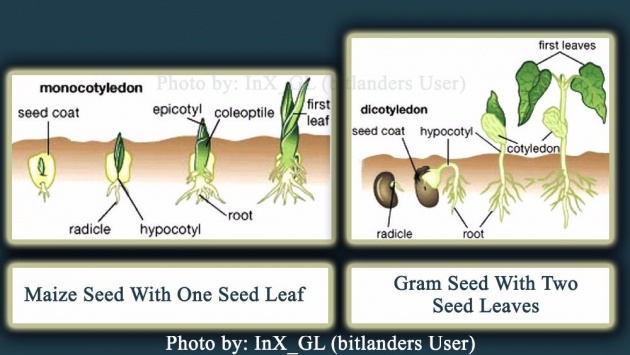
Photo Credit: InX_GL Via bitlanders
Food for the baby plant is stored in the seed leaves. As long as the baby plant does not grow green leaves, it depends on the food stored in the seed leaves. Grams, peas, and bean seeds have two seed leaves whereas wheat, maize, and rice has only one.
Seed Germination:
The development of a seed into a seedling is called “Germination”. Let us see how and when a seed germinates.
An Experiment:
By this experiment, it would be easier to me, to understand you the germination of seeds. Let’s start it, I believe you will not get bored lolls.
Take four plates and some gram seeds.
- Put some dry seeds in plate1 and keep it on a windowsill where it can get air, sunlight, and warmth.
- Put some seeds in plate 2. Cover them with water. Keep the plate on a window sill.
- Put some soaked seeds in plate3 and keep it inside a refrigerator.
- Put some soaked seeds on moist cotton in plate 4 and keep it on a window sill. Keep the cotton moist all the time.
A germination seed needs air to breath. It absorbs water so that the food stored in it is available in a soluble form for germination. It also helps the baby plant to break the seed coat and come out of it.
Warmth is needed for the cells of the seed to become active. This shows that three things water, air, and warmth are essentials for germination of a seed.
Now I will elaborate the stages in germination;
Stages in Germination:
If we soak some gram seeds in water and compare them with dry gram seeds. We will notice that a soaked seed is swollen because it has absorbed water. Its seed coat has become soft. Now if we put this soaked seed on a piece of wet cotton gauze tied over the mouth of a jar.
After few days we will see a tiny root coming out of the soft, moist seed coat. Later the shoot also comes out. The root grows downward and the shoot grows upward, towards sunlight. The seed at this stage is called "Seeding". This seedling grows to become a new plant. As the seeding leaves grow bigger, the seed leaves shrink.
The Seed Germination Process
Video Credit: BackToConstitution Via YouTube
Dispersal of fruits and seeds:
Plants cannot move from one place to another. But if all baby plants grow near the mother plant, not all would survive. They would not get enough sunlight, food, water, and space to grow. Hence nature has arranged some agents to scatter these seeds.
They carry seeds and fruits away from their parent plants. This process of scattering of seeds and fruits away from the mother plant is called “Dispersal”.
Dispersal helps seeds to reach favorable grounds for their growth. Dispersal is carried out by four agents wind, water, animals, and the explosion of the fruits. It is interesting to note that special structure of certain fruits and seeds helps the wind to carry them to a new place of growth.
Agents of Dispersal:
There are four main agents of dispersal;
1- Wind: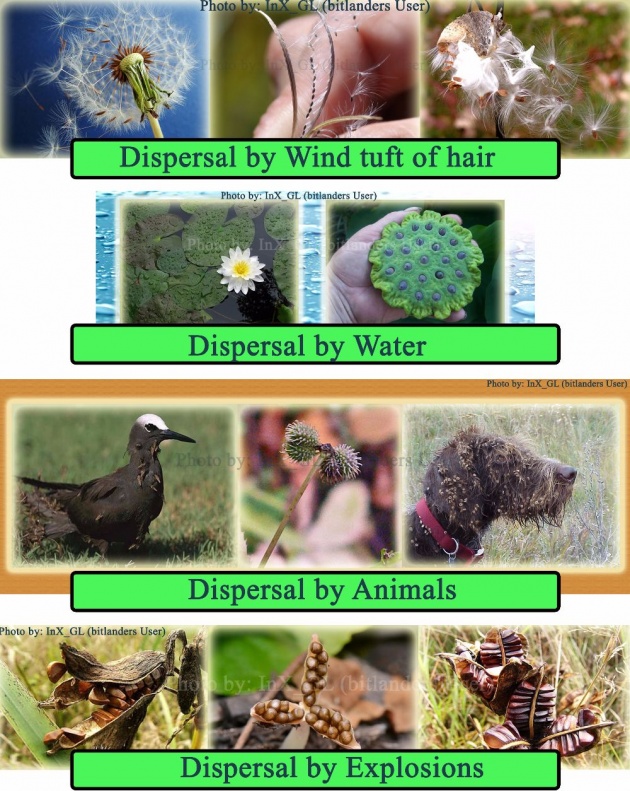
Seeds of cotton, madder, and hiptage are light and have “hair” or “wings” so they are easily carried by the wind or air.
2- Water:
The lotus fruit has a spongy part and the coconuts have a fibrous outer covering to make them float on water and are dispersed by water.
3- Human Beings, Birds, Animals:
Human beings and animals eat certain fruits and throw away the seeds. Some seeds with hooks or spines stick to the hairy skin of animals and are carried elsewhere. Birds and animals swallow some seeds which come out undigested in their droppings.
4- Explosion:
Some fruits, on drying, burst open or explode. The force of the explosion helps the seeds to scatter.
Photo Credit: InX_GL Via bitlanders
Next heading is very interesting, I hope fellows you are not getting bored of reading the blog.
New Plants from Parts of Old Plants or Parent Plants:
Besides growing from seeds. the other way in which new plants grow is from the body parts of the old or parents plants. UNDERGROUND STEMS, STEM-CUTTING, ROOTS, and LEAVES of certain plants can grow into new plants.
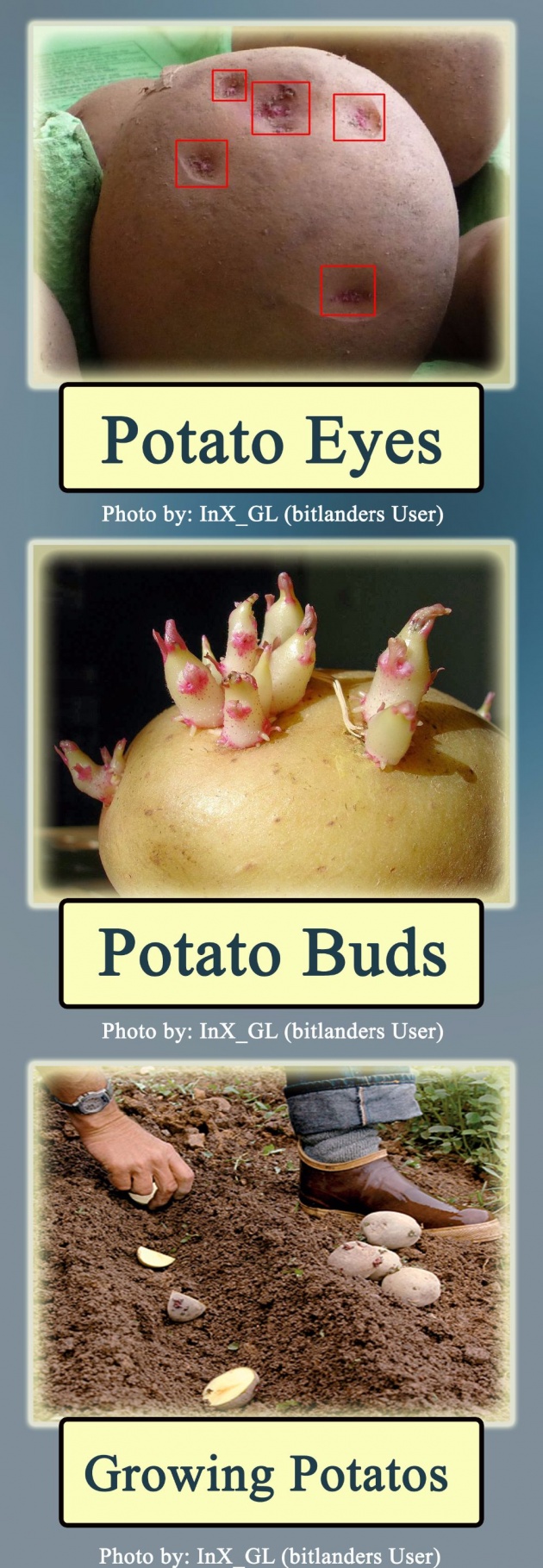
Photo Credit: InX_GL Via bitlanders
The Rose, sugarcane, and hibiscus grow from stems cutting. The buds on the stem cutting grow into new plants.
Potatoes, Sweet Potatoes and Ginger grow from underground parts of the plant. Bryophyllum is reproduced from its leaves.
Some plants also grow from their bulb, for example, onion and garlic grow from its bulb.
A Sexual Reproduction in Plants:
There are many ways by which plants grow into new plants asexually. The plants may reproduce asexually by;
1- Cutting:
Some plants like rose plant and shisham grow from their stems. The stems of these plants have nodes with an eye. Cutting of their branches is buried in the soil. After passing some time, they grow into new plants which are similar to the parent’s plants. Potatoes, sugarcane, grass; thor, ginger etc are some other plants grow in this way.
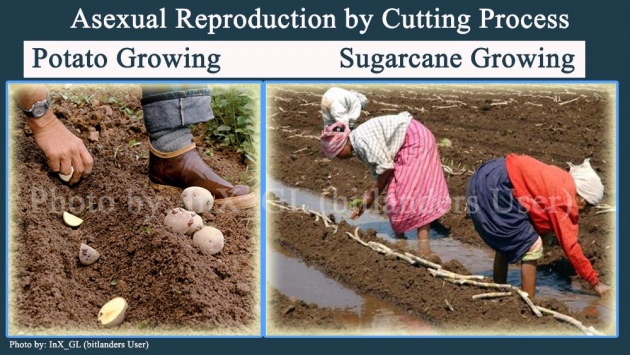
Photo Credit: InX_GL Via bitlanders
2- Layering:
Most branches of shrubs hand down towards the soil. Whenever a part of a branch gets buried in the soil, this buried part of the branch is known as LAYER. The layer grows in the new plant, which is similar to its parent’s plants. For Example, Litchi is grown through layering.
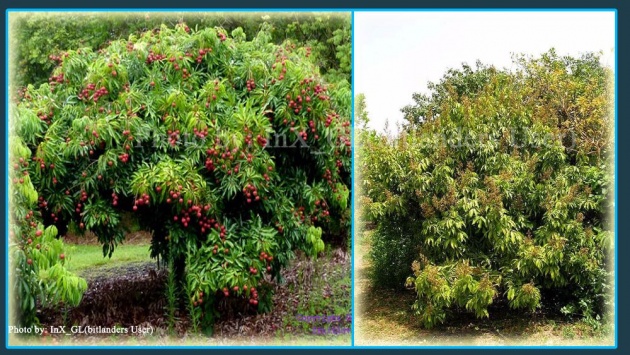
Photo Credit: InX_GL Via bitlanders
3- Grafting:
This technique is used obtain a better quality of fruits from the plants. For example, the branches of a good variety of mango plants are grafted on a stem of healthy and well grown ordinary young mango plant.
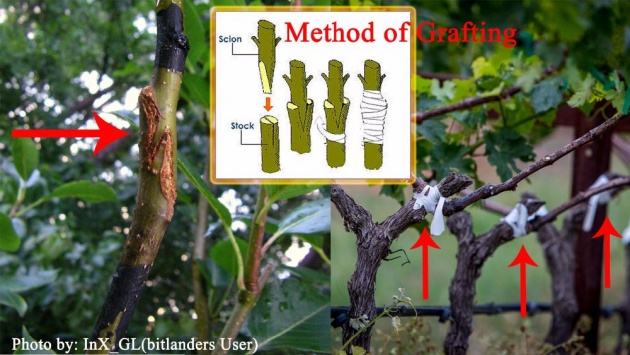
Photo Credit: InX_GL Via bitlanders
I think I have written enough because I'm a science teacher so I have much for writing to. Grafting is a separate topic, which can be written on, but I think I'm pretty much writing, will meet with a new and interesting topic in the next blog.
Till Then;
“TA TA, Bye Bye”
© Copy Right-InX_GL All right reserved 2017

